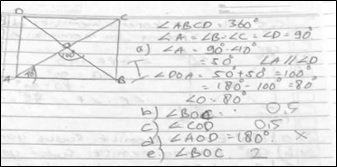Level of critical thinking of junior high school students in solving mathematical problems
Keywords:
analysis of student difficulties, mathematical critical thinking abilityAbstract
Critical thinking ability is a crucial ability in mathematics, both at the elementary, secondary, or college level. However, this critical thinking ability is still low. Therefore, the researchers want to study the problem at what level the students are doing in solving mathematical critical thinking problems. The research method used a qualitative method, with the implementation analyzing students who deal with mathematical critical thinking ability problems. The study was conducted at one of the State Junior High Schools in Kroya District, Indramayu, West Java. As a result of the study, information was obtained about students who could not solve the problems presented in mathematical critical thinking ability problems, so they did not understand which strategies should be used to solve problems that could be solved.
Downloads
References
Ruseffendi, 1988 Pengantar Kepada Membantu Guru Mengembangkan Kompetensinya dalam Pengajaran Matematika untuk Meningkatkan CBSA : Perkembangan Kompetensi Guru p. 1988.
Samo D D Darhim D and Kartasasmita B, 2017 Developing Contextual Mathematical Thinking Learning Model to Enhance Higher-Order Thinking Ability for Middle School Students Int. Educ. Stud. 10, 12 p. 17.
Klein E, 2016 Developing Minds.
Presseisen B Z, 1986 Critical thinking and skills: State of the art definition and practice in public schools p. 60.
Gaol M L Prabawanto S and Usdiyana D, 2019 Students’ mathematical critical thinking ability on cube and cuboid problems J. Phys. Conf. Ser. 1157, 4.
Lorentzen L, 2013 Limiting Behavior of Random Continued Fractions Constr. Approx. 38, 2 p. 171–191.
Palinussa A L, 2013 Students’ critical mathematical thinking skills and character: Experiments for junior high school students through realistic mathematics education culture-based J. Math. Educ. 4, 1 p. 75–94.
Su H F H “Angie” Ricci F A and Mnatsakanian M, 2015 Mathematical Teaching Strategies: Pathways to Critical Thinking and Metacognition Int. J. Res. Educ. Sci. 2, 1 p. 190.
McLean C, 2005 Evaluating Critical Thinking Skills: Two Conceptualizations. J. Distance Educ. 20, 2 p. 1–20.
Nio T H Sukestiyarno Y L and Waluya B, 2017 Study on Critical Thinking Skills Basic Int. J. Contemp. Appl. Sci. 4, 1 p. 54–70.
Barwell R, 2011 Word Problems: Connecting Language, Mathematics and Life June.
Ontario, 2013 Capacity building series -Asking Effective Questions Student Achieve. Div. 8490 p. 1–8.
Kojo A Laine A and Näveri L, 2018 How did you solve it? – Teachers’ approaches to guiding mathematics problem-solving LUMAT Int. J. Math, Sci. Technol. Educ. 6, 1 p. 22–40.
Carroll P and Ritsema B, 2015 Learning to Ask Questions that Engage Students and Deepen Understanding.
Henningsen M and Stein M K, 1997 Mathematical tasks and student cognition: Classroom-based factors that support and inhibit high-level mathematical thinking and reasoning J. Res. Math. Educ. 28, 5 p. 524–549.

Published
How to Cite
Issue
Section
Copyright (c) 2023 Mellawaty Mellawaty, YL Sukestiyarno, Zaenuri, Isnarto

This work is licensed under a Creative Commons Attribution-ShareAlike 4.0 International License.
The use of non-commercial articles will be governed by the Creative Commons Attribution license as currently approved at http://creativecommons.org/licenses/by/4.0/. This license allows users to (1) Share (copy and redistribute the material in any medium) or format; (2) Adapt (remix, transform, and build upon the material), for any purpose, even commercially.







